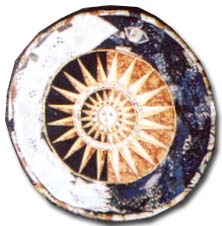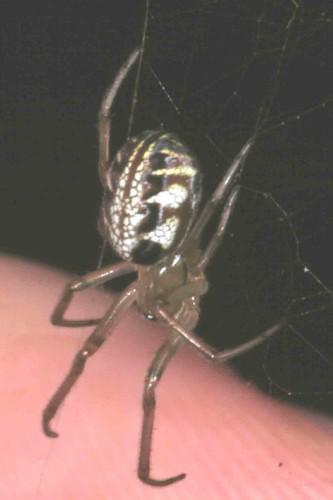
The leaf curling spider (
Phonognatha graeffei, Family Tetragnathidae) is ubiquitous in the Sydney area. They're everywhere, and you can easily pick them out in the undergrowth by their pretty distinctive webs. They build a typical orb web but with a twist- literally. On the upper part of the web, you can usually see a dried leaf that's been curled in to a retreat, and the spider usually pokes its legs outside the leaf.
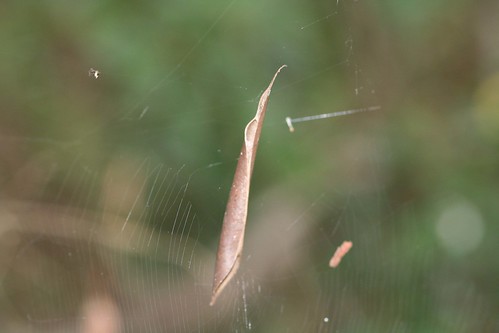
While it is not uncommon for orb spiders of the family Araneidae to build retreats, the leaf curler is one of the few (as far as I know) that actually incorporates the leaf into the web. I've read that they actually pull up leaves from the ground in order to incorporate them into the web. I don't know whether there is any preference for particular leaves, I've never bothered to find out what plants are preferred, if any. The male is known to cohabit the retreat with the female.
I had some vague hypotheses about whether the choice of the leaf is important, or whether the leaf offers any advantage other than the obvious one of protection. For example, it has been shown in some spiders that the orb web is distorted on the vertical plane so that it is harder for approaching insects to see the web and thereby facilitating their capture. Maybe the leaf functions in the same way, breaking up the pattern of the web.
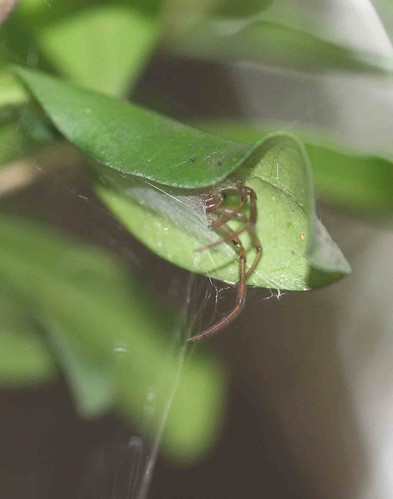
When I went looking for these spiders in the small woodland area behind the lab, I came across a few Leaf Curlers that had build their webs such that the leaf was still attached to the plant. This was more akin to the retreats seen in other orb spiders, and which somehow lends weight to the protection hypothesis. But these individuals could be of a different species or very few in number in the population. Still if it's the same species, it's an interesting variation in web building pattern.
Like other orb weavers, it looks like Leaf Curlers are also vulnerable to kleptoparasitic pressure. If you look at the second photograph, you might notice a small dot in the left of the leaf. I took a closer look at it and it turned out to be a spider of the Genus Argyrodes (Family: Theridiidae).
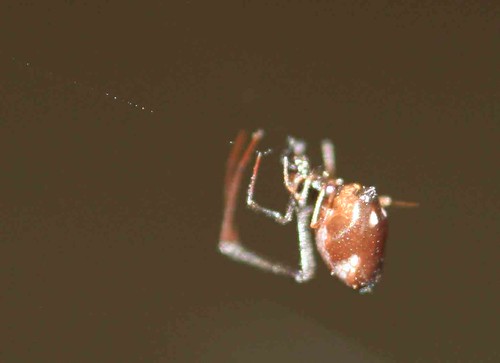
I will write a longer post about them someday, but for now, it suffices to say that these small spiders live on other spiders webs and eat/steal scraps from the bigger spider.
Back to the Leaf Curlers, here's a nice thought experiment that I, well, thought of a while ago. It would be cool to place an individual in a glass cage and give it only one artificial material, say like a ribbon or something and see if it uses the material anyway. Bit of an art project really, bio-art.
Note: All photographs taken by
Ajay Narendra.




